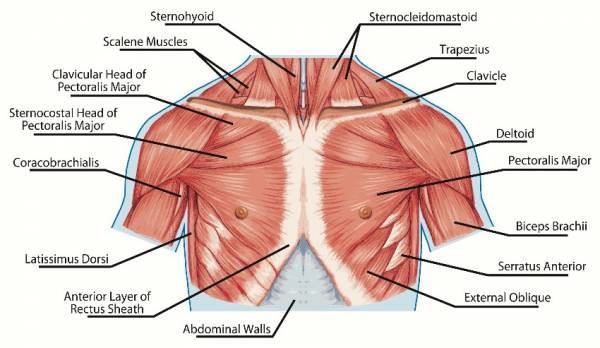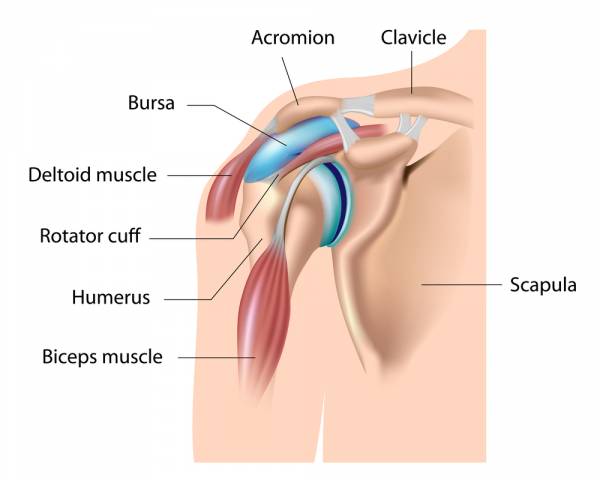Five rounds of 15 push press, 10 burpees, 10 box jumps. 3, 2, 1 – go! It’s round three and the inability for my body to do exactly what my coach just asked me to do is now rearing its ugly head. My push press has graduated into a push jerk or the jerk’s weird cousin, which isn’t really a lift at all. It’s more of a movement of weight in a somewhat superior direction. My burpees have turned into falling flat on my face and slowly worming myself to an upright position. And the box jumps? They have become step-ups because my arms can no longer propel myself forward. Whatever, I Rx’d the shit out of this WOD. Nevermind I don’t know how I’m going to get my shirt off once I get home.
Sound familiar? This is a common theme among my athletes with chronic shoulder dysfunction. Physical therapy isn’t about fixing things. It’s about teaching people to move their stuff the way it was designed, efficiently, and with mechanical integrity. In a workout like the one above, shoulder and thoracic positioning are key. A five-round triplet like this, in theory, should take less than ten minutes with the correct weight, box jump height, and burpee scaling (yes, you can scale burpees). How often do our athletes scale appropriately? Ego is huge in CrossFit. Just ask me, I have one too.
The push press requires posterior shoulder mobility, thoracic mobility, and lat flexibility. When those things are not present, the shoulder joint is in a protracted (forward) position. Try this: slump forward, then raise your arm overhead. Doesn’t go far does it? Now sit up tall. Holy shit, you just increased your range by probably about forty degrees. By straightening up, you increased thoracic extension, put your scapula in the proper position on your thorax, and set your rotator cuff and scapular stabilizers for success, recruiting over twenty muscles to stabilize the shoulder joint and allowing you effectively lift that weight overhead. When those muscles are strong, you can do it over and over, with mechanical integrity.
The same holds true for the burpee. Burpees, more commonly used for punishment and responsible for rapid increases in heart rates, are often performed in the same crummy posture as overhead movements. Again, if you hit the deck with a collapsed thoracic spine, forward shoulders, and a crunched up neck, you’re going to have a bad time.
There are eighteen muscles alone that attach to the scapula. They have to work together at specific ranges of motion to control the scapula on the thoracic spine and subsequently place the shoulder joint in optimal mechanics. The muscles most often over-recruited in CrossFit are the pectoralis major and minor, upper trapezius, and deltoids. Left to their own devices, the lower trapezius, serratus anterior, and rhomboids forget their duty.

As the arm raises overhead, the scapula has to rotate upward one degree for every two degrees of humeral motion (different literature will yield a different measurement). If the scapular muscles aren’t getting the correct neurological input, they won’t fire at the right time, resulting in scapular dyskinesia. This decrease in scapular control places the glenohumeral joint at a mechanical disadvantage, and bigger muscles start to compensate for the smaller ones getting no love. Result? Shoulder pain.
Since the shoulder is rather complicated, the culprit of the problem may be difficult to pinpoint:
Biceps tendonitis:
This is usually associated with pain on the anterior shoulder, worst with overhead movement and tenderness to palpation. It can often be diagnosed with manual orthopedic tests and successfully addressed with rest, ice, and corrective strategies to decrease the impingement on the biceps tendon.
Rotator cuff tendonitis:
 This may present similarly, although pain is usually on the lateral border of the shoulder and occasionally radiates into the lateral arm. Again, diagnosis is often confirmed with special tests, and a physician may order x-rays or MRI. Most research advocates physical therapy intervention prior to MRI or surgical procedure, which renders success. Occasionally, an injection may be needed or other more invasive management. Repeated injections are not encouraged, as the tissue quality of the rotator cuff isn’t all that great to begin with, and repeated injections of steroid certainly won’t make things improve significantly.
This may present similarly, although pain is usually on the lateral border of the shoulder and occasionally radiates into the lateral arm. Again, diagnosis is often confirmed with special tests, and a physician may order x-rays or MRI. Most research advocates physical therapy intervention prior to MRI or surgical procedure, which renders success. Occasionally, an injection may be needed or other more invasive management. Repeated injections are not encouraged, as the tissue quality of the rotator cuff isn’t all that great to begin with, and repeated injections of steroid certainly won’t make things improve significantly.
Labral pathology:
This pathology is generally characterized with repetitive clunking, catching, and popping in the shoulder joint. This may be worsened with overhead movements, kipping, and throwing. Labral issues seldom resolve to pre-injury status with physical therapy, as the tissue is damaged and often remains problematic. Instead of waiting for your labrum to tear, take the appropriate measures to learn to control your rotator cuff and scapular muscles.
If you have any of these symptoms, go find someone who knows what they are doing. You can look for a physical therapist at www.apta.org who specializes in orthopedic or sports physical therapy. You can also seek out a good orthopedist at www.aaos.org.
In short, if it hurts, and keeps hurting, get it checked out. If you have any of the symptoms described above, get it checked out. These symptoms could result in a much larger problem and more time away from doing what you love.
Photo 1 by LadyofHats Mariana Ruiz Villarreal (i did it myself) [Public domain], via Wikimedia Commons.
Photo 2 courtesy of Shutterstock.






